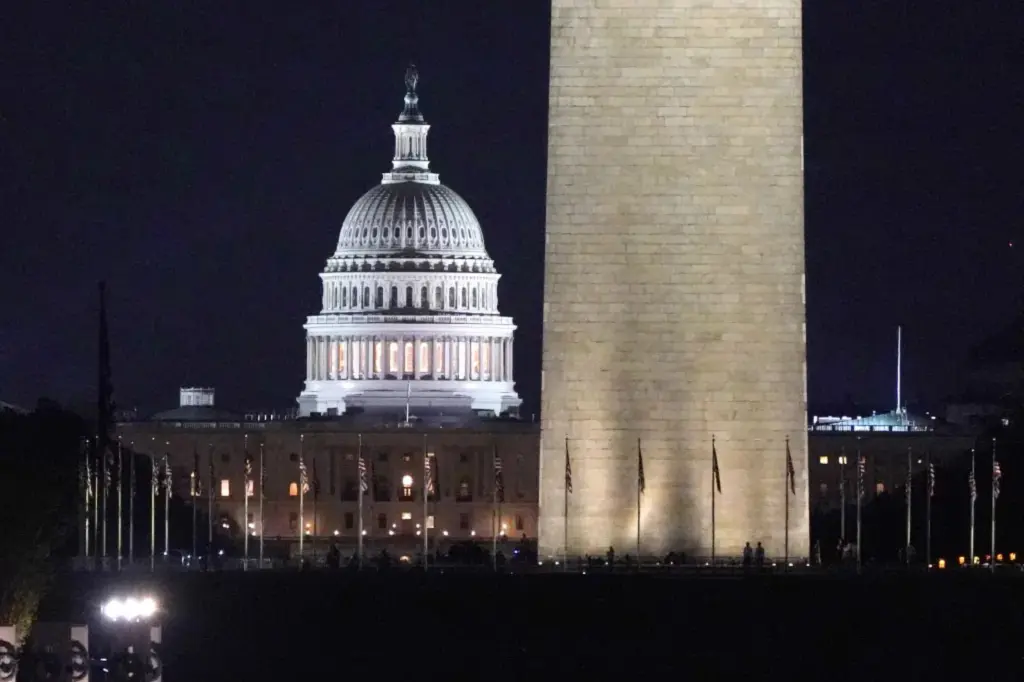Government Shutdown: A Nation at an Impasse
In a dramatic turn of events, the federal government officially shut down at midnight Wednesday after Senate Democrats, with only three exceptions, voted against a short-term funding bill. This marks the first government shutdown since December 2018, when a 35-day standoff led to furloughs for tens of thousands of federal employees. Following the failed Senate vote, White House Office of Management and Budget Director Russ Vought instructed federal agencies to “execute their plans for an orderly shutdown.” The House-passed bill, which would have maintained current funding levels until November 21, fell five votes short of clearing the Senate’s 60-vote threshold. While Republicans and President Trump backed the measure, Democratic leadership refused to support it without provisions extending pandemic-era healthcare insurance subsidies and reinstating billions in funding for foreign aid and other programs cut by Trump. The uncertainty of how long this political standoff might last has left many Americans concerned about essential government services and the broader economic impact.
Senate Majority Leader John Thune expressed cautious optimism that enough “reasonable Democrats” might eventually cross party lines to pass the funding measure and reopen the government. “We picked up 3 tonight… we’re going to vote on it again tomorrow,” Thune told Fox News, suggesting that Senate Democrats might soon “start cracking because they realize this is a losing hand.” This assessment seems supported by public opinion data – a New York Times/Siena poll found that 65% of registered voters opposed a government shutdown even if Democratic demands weren’t met. Even among registered Democrats, 43% opposed shutting down the government without concessions, while 59% of independents and an overwhelming 92% of Republicans stood against a shutdown under any circumstances. The clear public distaste for government shutdowns as a political tactic has placed additional pressure on lawmakers to find a swift resolution, though the deeply entrenched positions on both sides make compromise challenging.
The political theater surrounding the shutdown has been intense, with President Trump meeting Democratic leaders Chuck Schumer and Hakeem Jeffries just days before the deadline. After the failed vote, Trump posted images of their Oval Office meeting on Truth Social, showcasing “Trump 2028” hats placed conspicuously in front of the Democratic leaders. He also shared a digitally-altered video depicting Jeffries wearing a sombrero while being serenaded by a mariachi band of Trumps – political messaging that has inflamed tensions. Republicans have accused Democrats of wanting to include “free health care for illegal aliens” in the funding legislation, a claim Democratic leaders have denied. Earlier on Tuesday, Trump hinted at “irreversible” actions during the shutdown, including potential federal employee layoffs, telling reporters, “We can do things during the shutdown that are irreversible that are bad for them and irreversible by them, like cutting vast numbers of people out, cutting things that they like, cutting programs that they like.” As midnight approached, the White House website displayed a countdown clock declaring “Democrat shutdown is imminent” alongside videos of Democrats describing the negative effects of past government shutdowns.
Senate Minority Leader Chuck Schumer has placed the responsibility squarely on Republicans, suggesting they would face “tremendous” pressure to accede to Democratic demands. “It’s right now in the Republicans’ court,” Schumer stated at a press conference. “We’ve said this to Trump yesterday. He can easily call up Thune and Johnson and say, ‘Just add the two parts [Democrats] want added to the bill.'” Schumer predicted mounting public pressure as “the American people are learning how bad this healthcare crisis is and they will put tremendous heat on Republicans to solve it.” Republicans have countered that by voting against the short-term spending bill, Democrats are endangering crucial benefit programs and potentially compromising public safety. House Speaker Mike Johnson highlighted specific concerns: “Troops won’t be paid. TSA agents won’t be paid. The WIC program — the Women Infants and Children Nutrition program — and other food services will be delayed. FEMA services won’t be provided. We have two hurricanes off the coast of the United States right now. I mean, we’re in the middle of hurricane season. This is serious stuff.”
While the political blame game continues in Washington, everyday Americans are left wondering about the practical implications of the shutdown on their lives. Members of Congress, political appointees in the Trump administration, and all essential federal employees – including postal carriers and air traffic controllers – will continue to be paid during the shutdown. Critical federal benefits such as Social Security, Medicare, Medicaid, and the Supplemental Nutrition Assistance Program (food stamps) will also continue to be distributed, providing some relief to vulnerable populations. However, U.S. military service members, non-essential federal employees, and White House staff will only receive retroactive payment once the shutdown ends. For many federal workers living paycheck to paycheck, this uncertainty creates significant financial stress. The broader economic impact remains concerning as well, with potential ripple effects through government contractors, tourism at national parks, and various sectors dependent on timely government operations.
As the shutdown enters its first full day, both parties remain entrenched in their positions while the American public increasingly calls for compromise. Senate Majority Leader Thune’s characterization of the continuing resolution as “routine” – noting that during Schumer’s time as majority leader, “we passed short-term continuing resolutions — 13 times — and the Republicans delivered the vote for it” – contrasts sharply with the Democratic leadership’s insistence on additional provisions. The political calculus for both sides involves weighing public opinion against core policy priorities, all while essential government functions hang in the balance. With hurricanes threatening coastal regions and various social safety net programs facing disruption, the pressure to resolve this impasse grows by the hour. Whether this shutdown will be brief or extended depends largely on which side feels greater political pain from an increasingly frustrated electorate. For now, federal workers, military families, and millions of Americans who depend on government services can only wait and hope for a swift resolution to this latest breakdown in governance.


